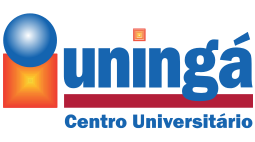ENXERTO ÓSSEO ALVEOLAR SECUNDÁRIO COMO PROTOCOLO DE TRATAMENTO EM PACIENTE PORTADOR DE FISSURA LABIOPALATINA
RELATO DE CASO CLÍNICO
Keywords:
enxerto ósseo alveolar, fenda labiopalatina, correção secundáriaAbstract
As fissuras labiopalatinas (FLPs) são consideradas as malformações congênitas craniofaciais mais prevalentes, caracterizam-se por distúrbios que ocorrem durante o desenvolvimento embrionário e que resultam da não união de múltiplos processos teciduais. Apresentam etiologia multifatorial, na maioria das vezes decorrente de fatores genéticos associados a fatores ambientais. Acarretam problemas estéticos, funcionais e psicológicos aos portadores. O tratamento requer abordagem multidisciplinar e realização de procedimentos cirúrgicos para correção. Um dos procedimentos cirúrgicos realizados é o enxerto ósseo na região alveolar, que, de acordo com o momento da sua realização, pode ser dividido em técnica de enxerto ósseo primário, secundário ou terciário. A técnica de enxerto ósseo alveolar secundário (EOAS), descrita em 1972 por Boyne e Sands é considerada atualmente a melhor opção de tratamento. O EOAS caracteriza-se por ser realizado durante o período de dentição mista e, preferencialmente, antes da total erupção do canino permanente. O presente trabalho tem como propósito descrever um caso de EOAS em paciente portador de FLP, realizado com enxerto autógeno proveniente da crista ilíaca, bem como determinar a eficácia do procedimento.
Downloads
Downloads
Published
How to Cite
Issue
Section
License
I declare/we declare that the text submitted here is original, of my own authorship and does not infringe any type of third party rights. The content is my/our sole responsibility. Possible research involving animals and/or human beings is in accordance with Resolution 196/96 of the National Health Council and its complements. I declare that I am/we are in possession of the written consent of patients and that the research and its procedures were timely and adequately approved by the Ethics Committee of the institution of origin. We further declare that all institutional affiliations and all sources of financial support for the work are duly informed. I certify that there is no commercial or associative interest that represents a conflict of interest related to the submitted work. If there is commercial interest, in addition to the technical and academic ones, in the publication of the article, the information will be reported during the text.







































